EDF, the world's leading producer of low-carbon electricity, offers innovative and tailored solutions to support the energy transition of the maritime sector by:
EDF develops its activities while ensuring their sustainability through:
Producing more low-carbon electricity, including in coastal areas, and by developing marine renewable energies
The EDF Group relies on a strong presence in coastal, estuarine, and maritime zones, with 25 GW of installed capacity in France, with nearly 90% of low-carbon sources :
- Over 21 GW from nuclear power plants located on the coast or estuaries in France.
- Nearly 3 GW from thermal power plants in mainland France and the island territories.
- Around 1 GW of offshore wind farms operated by EDF power solutions, and 2.6 GW under development or construction.
- 240 MW supplied by the tidal power plant at La Rance in Brittany (the second largest tidal power plant in the world).
- And the development of innovative solutions such as thalassothermal energy and marine pumped-storage (Tanika project in the Réunion island).
This dynamic is part of EDF's strategy to increase low-carbon electricity generation, notably through the launch of an industrial program for three pairs of EPR2 reactors in France, two of which could be built on the coast at Penly and Gravelines, and through the development of marine renewable energies and off shore wind power.
Accelerating the decarbonization of the maritime sector
Since 2024, EDF has supported the MEET2050 institute, dedicated to the energy transition of the maritime sector, and has played an active role in drawing up the French roadmap for decarbonising the sector. This collective mobilization, in collaboration with all stakeholders in the sector, is essential to address the climate emergency and to bring in lasting transformations of the maritime industry.
-
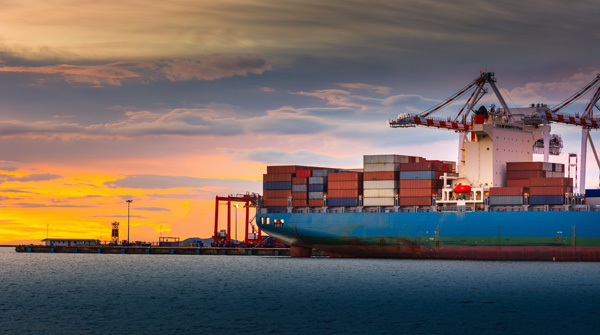
EDF supports the energy transition of the maritime sector
Read the white paper: 'What energy transition for the maritime and industrial-port sector?' [in French]To support the energy transition of the maritime and river sectors, the EDF Group offers innovative solutions to decarbonize ports and industry, develop marine renewable energies, and invent the new maritime and river transports.
-
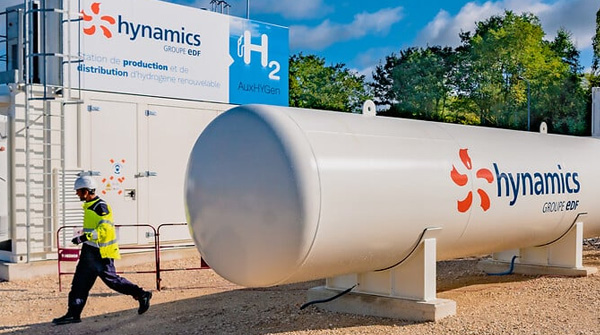
Electrification and hybridisation of ships
Through its subsidiary Hynamics, EDF is taking part in the HYNOVI project, which aims to produce low-carbon e-methanol. With this project, the emission of more than 850,000 tonnes of CO₂ will be avoided each year. The plan is to replicate this project at other european and international industrial sites.
-
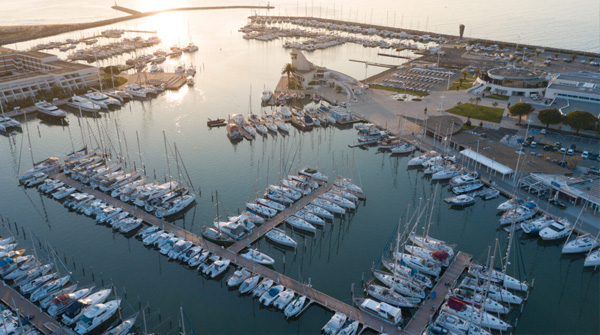
Environmental efficiency of ports
EDF, through its eCo-Port offer, supports marinas in their transition by proposing a new model for optimizing port activities (centralized supervision system) and sustainable infrastructure through:
- The modernization of electrical installations and energy renovation.
- The electrification of mobility.
-
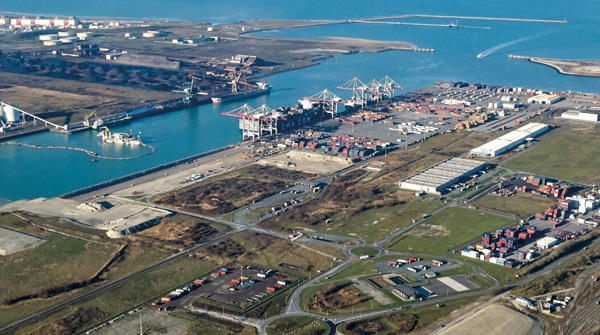
Circular economy in industrial port areas
More about the EPIFLEX projectThe EPIFLEX project, led by EDF with Mines ParisTech and ADEME, promotes industrial cooperation in Dunkirk to reduce the environmental footprint by recovering waste heat and waste water. This scheme has resulted in:
- 43,000 tonnes of CO₂ avoided/year.
- Up to 1.3 TWh of heat reused/year.
- 1.5 million m³ of water saved/year
Preservation of marine biodiversity
Conciling the preservation of biodiversity with the development of its activities is a priority for EDF. Rigorous impact studies are carried out with experts to assess the potential effects on local ecosystems and to identify concrete actions to minimize the environmental impacts of the various installations. Beyond regulatory requirements, EDF actively engages with leading organizations such as Ifremer, CNRS, and IUCN to conduct in-depth research programs that aimed to better understand marine fauna and flora, particularly in the context of global changes, including climate change.
-
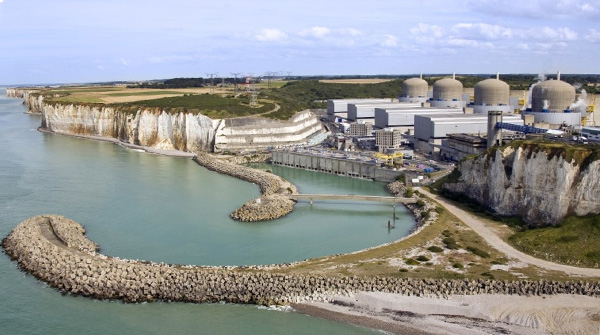
Ecological monitoring around coastal facilities
As part of its 2023–2027 Thermie-Hydrobiology research program, EDF is carrying out several projects in partnership with Ifremer to better understand the effects of climate change on the marine environment. Among these, the LOTERIE project analyses the evolution of coastal communities in the English Channel over forty years, and the STREEESS project studies how the European sea bass adapts to new environmental conditions.
-
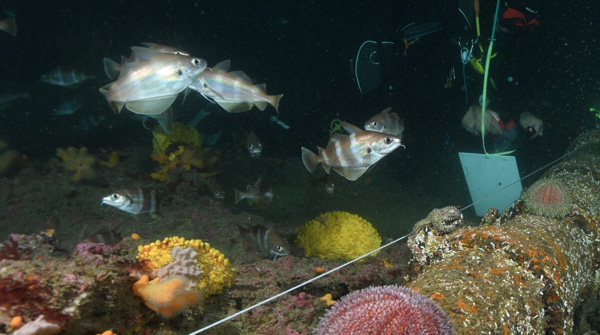
Environmental measures for offshore wind farms
Impact monitoring and the implementation of environmental measures are central to the development of offshore wind farms, in order to concile the production of renewable energy with the preservation of marine ecosystems. For the Saint-Nazaire offshore wind farm, a rigorous and innovative approach based on partnership research programs has been deployed throughout the project to gain a deeper understanding of the impacts and improve the environmental integration of the project:
- Detailed monitoring and observation campaigns carried out with local associations, enabling to observe a rapid colonisation of the foundations by marine fauna and the creation of new habitats.
- The development of innovative technological solutions, such as less noisy drilling techniques to protect marine mammals.
- Monitoring seabirds, supported by long-term observations and specific measures to protect sensitive species, with the contribution of specialist associations.
-
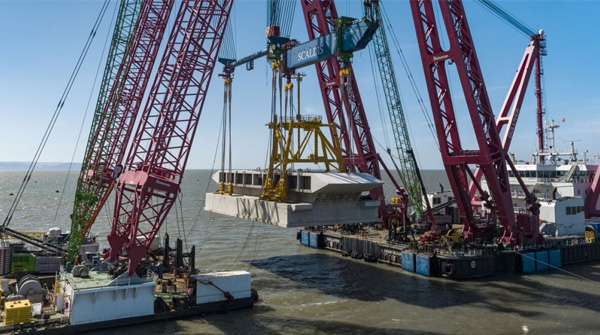
Design of an innovative water intake
The Hinkley Point C nuclear power plant (United Kingdom) is designed to minimise impacts on the marine environment, including fishes, through:
- Low-speed water intakes to limit fish entrapment risk.
- Filters and screens in front of the pumps to protect aquatic fauna.
- A system for retrieving and returning fish to the sea.
-
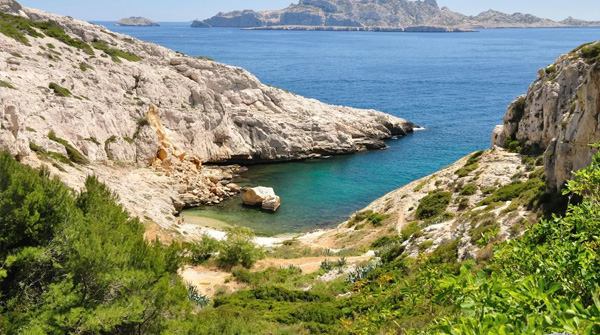
Preservation of coastal areas
EDF is actively committed to the preservation of marine biodiversity, notably through scientific partnerships and ecological monitoring programs. Thus, in Calanque de Podestat (which is owned by EDF), EDF has been collaborating for more than 12 years with the Paul Ricard Oceanographic Institute (IOPR) to study, record, and protect the local flora and fauna.
This collaboration aims to:
- Study and monitor the ecological status of the bay and surrounding sites.
- Establish a detailed inventory of its fauna and flora.
- Implement innovative monitoring techniques.
-
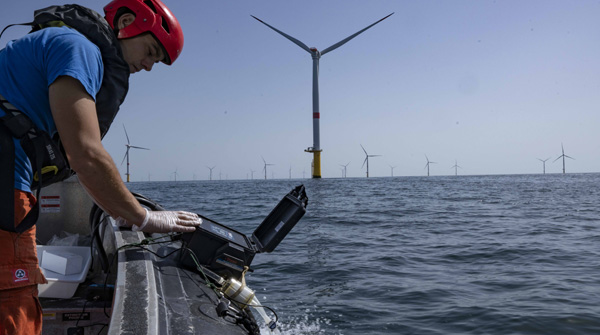
Acquiring scientific knowledge of marine biodiversity
EDF is helping to preserve marine biodiversity through the Sentinel Marine Areas Vigilife program, run in partnership with the University of Montpellier, the CNRS and Spygen. Based on the analysis of environmental DNA contained in samples obtained by filtering seawater, this program aims to detect a wide range of species, including the rarest or most threatened ones, in a non-invasive way.
13 Marine Sentinel Areas are monitored every year along the French coast, including 3 near EDF electricity production sites.
The renewal of this program in 2025 aims to ensure the continuity of the monitoring activities and to expand the network to new regions and partners.
Adaptation to climate change
EDF is taking action on the issues related to the impacts of climate change on the sea and oceans. Since 1990, EDF R&D has been working on the climate and its effects. An internal climate service has been set up and research programs in collaboration with organisations such as Météo-France are on-going, some of which is devoted to the consequences of climate change on the sea.
In continuity with this scientific work, EDF has deployed climate change adaptation programs in its operational entities.
-
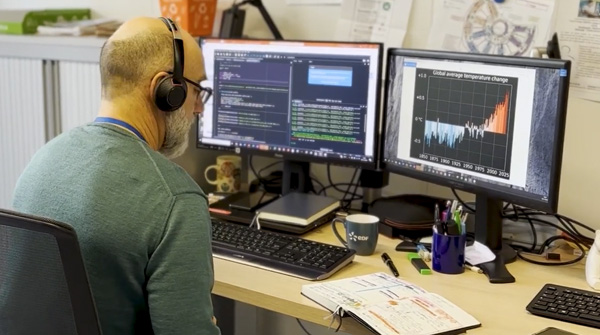
The “Climate Service”
The EDF Group has set up its own “Climate Service”, established in 2014 within its R&D division and in collaboration with the Group’s engineering teams.
Its three objectives are:
- To have access to the most recent climate projection data.
- To develop specific methods and tools for translating climate projections into relevant, localized indicators for the Group’s facilities.
- To contribute to climate impact studies for the Group’s operational activities.
-
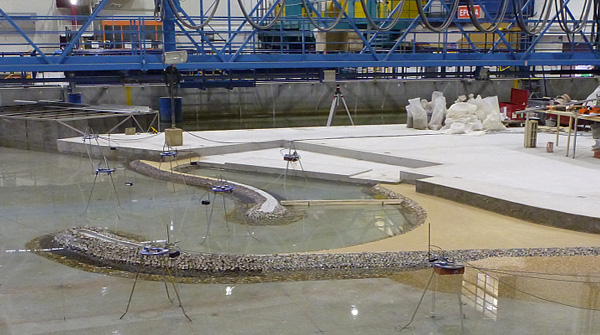
Protective structures for littoral nuclear power plants
The most recent nuclear power plants built by the EDF Group (Flamanville 3, France) or currently under construction (Hinkley Point C and Sizewell C, UK) have all been designed taking into account the a rise in sea level corresponding to the IPCC's pessimistic scenario and incorporating an additional margin. The design lifetime of the structures is 100 years, to cover both the operating period and the plant decommissioning phase.
EDF's research division conducts model sutudies combining tests in basins (physical modelling) and numerical simulations (using openTelemac) to verify the proper sizing of the protections, in accordance with the methodology defined by the ASN.
-
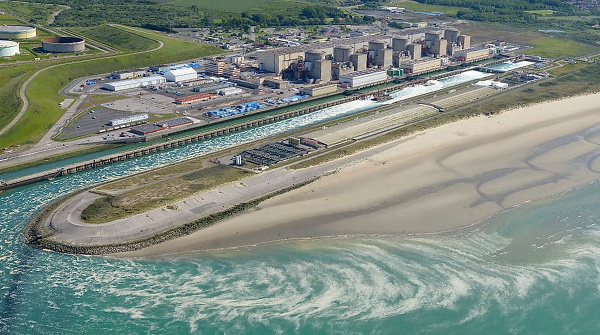
Study of coastal erosion
Since autumn 2024, EDF and BRGM have started a joint thesis on the resilience of the Dunkirk, studying the potential impacts of rising sea levels and marine storms. The thesis has three main objectives:
- To develop a numerical modelling method to explore the effects of coastal dune erosion (morphodynamic changes) on flooding.
- To apply this method at event scales (for example, a storm over a few days) as well as longer terms (such as sea level rise over several decades), considering various climate change scenarios.
- To identify areas vulnerable to flood risks under different scenarios and to propose potential adaptation solutions (coastal defence structures, changes in land use, etc.).
Integration in coastal regions and in the blue economy
EDF is actively involved at local levels in the blue economy, contributing to the economic, social, and environmental development of the regions where the company operates. Through its policy of local procurement and job creation, EDF supports the vitality of these areas. The Group is also committed to dialogue and consultation with its stakeholders in order to take their expectations into account and encourage co-activities, thus ensuring the harmonious integration of its projects.
-

Consultation and dialogue approach
Find out more about the consultation and dialogue approach at EDFSince 2010, the EDF Group has been committed to systematically organize transparent, adversarial dialogue as part of its new projects, at every stage of the projects. This is the case, for example, for the EPR2 project at Penly:
- In 2023, a public debate was held to discuss the project’s purpose, possible alternatives, and its socio-economic and environmental impacts.
- Following this public debate, consultation has continued through tailored measures (meetings, online discussions, and local workshops) to encourage participation from everyone, including younger generations.
-
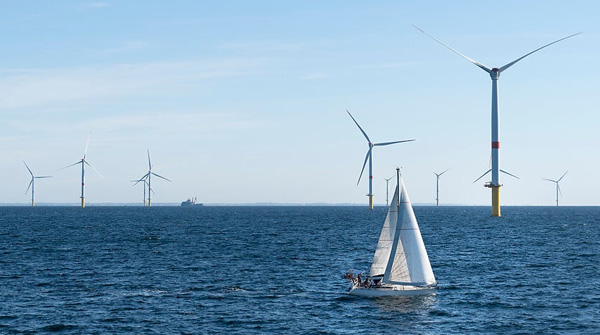
Co-activités humaines en mer
EDF is one of the founding sponsors of the Maritime Chair of the Nantes University Foundation. This program is dedicated to producing and sharing original insights into the dynamics of human activities on sea. After an initial phase from 2019 to 2023, the Chair has been renewed for 2025–2029.
-
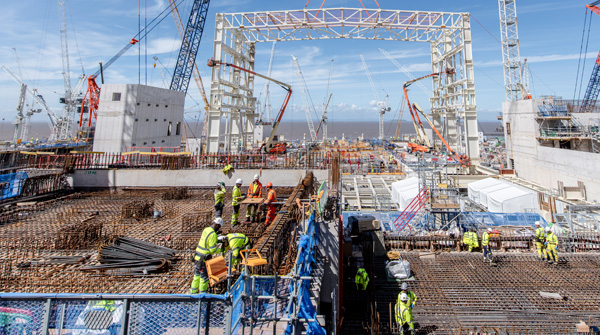
Contribution to the local economy
EDF, through its major industrial projects and initiatives in the energy transition, plays a key role in the economic vitality of coastal regions by creating skilled jobs in France and internationally:
- 1,300 people have been employed in Le Havre for the manufacturing of wind turbines for the Fécamp offshore wind farm.
- Around 12,000 people are working on the construction of the Hinkley Point C power plant in the United Kingdom. The project is expected to provide 71,000 jobs across the country by the end of construction.
- On the EPR2 project at Penly, all the interns have been recruited (75% of them were living in the close area).






